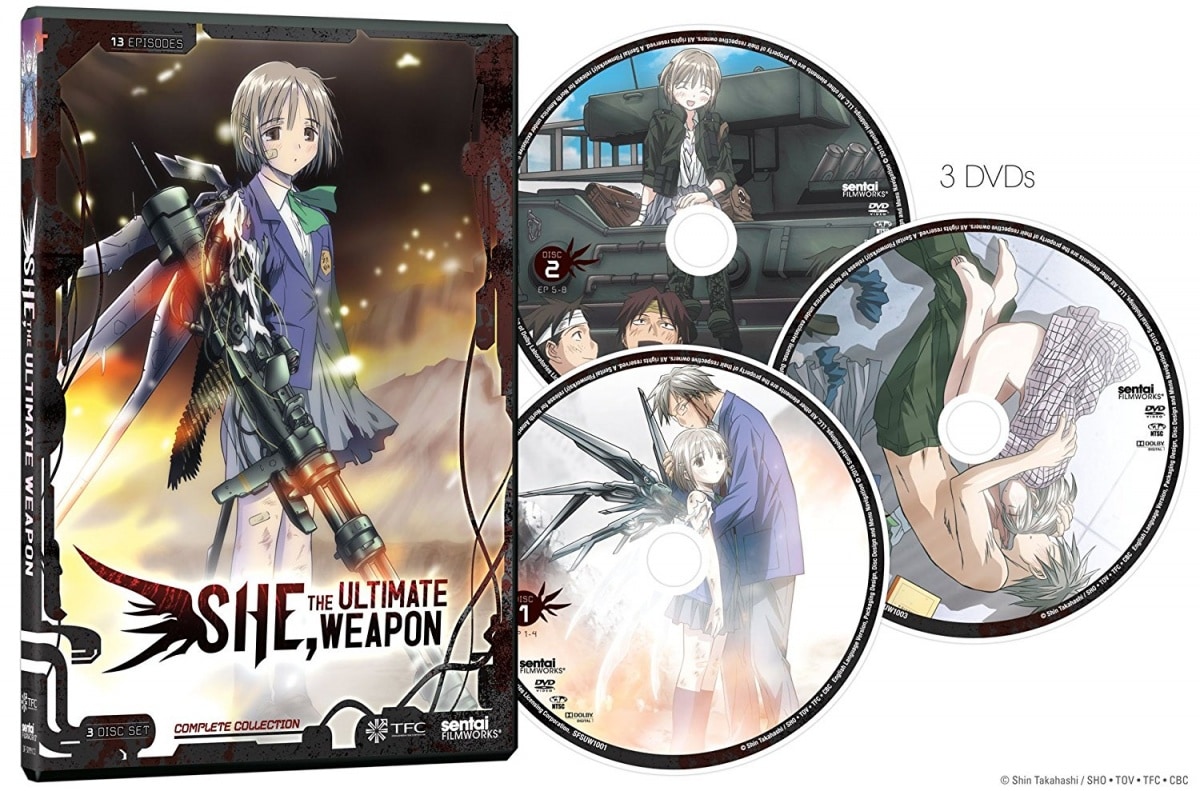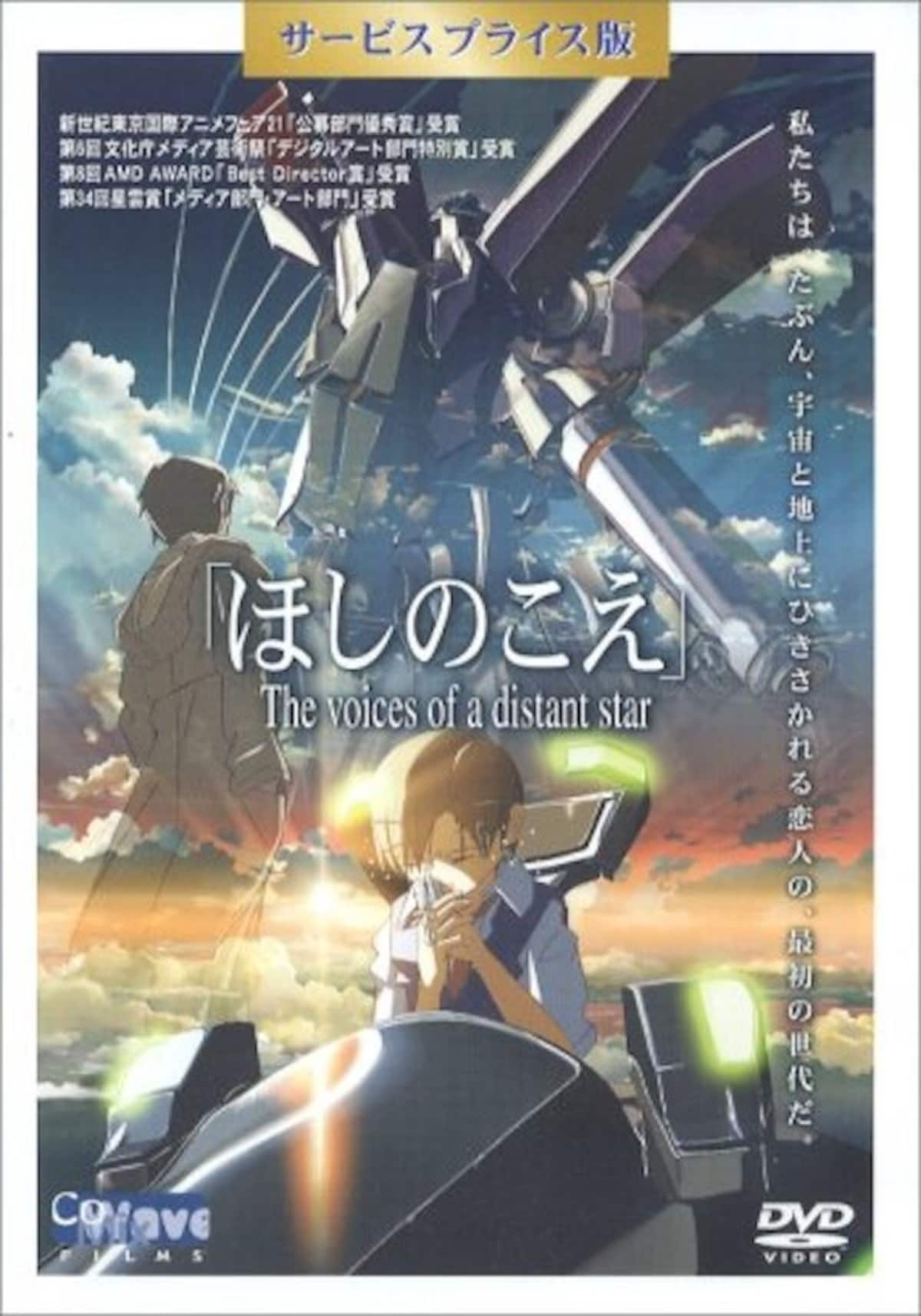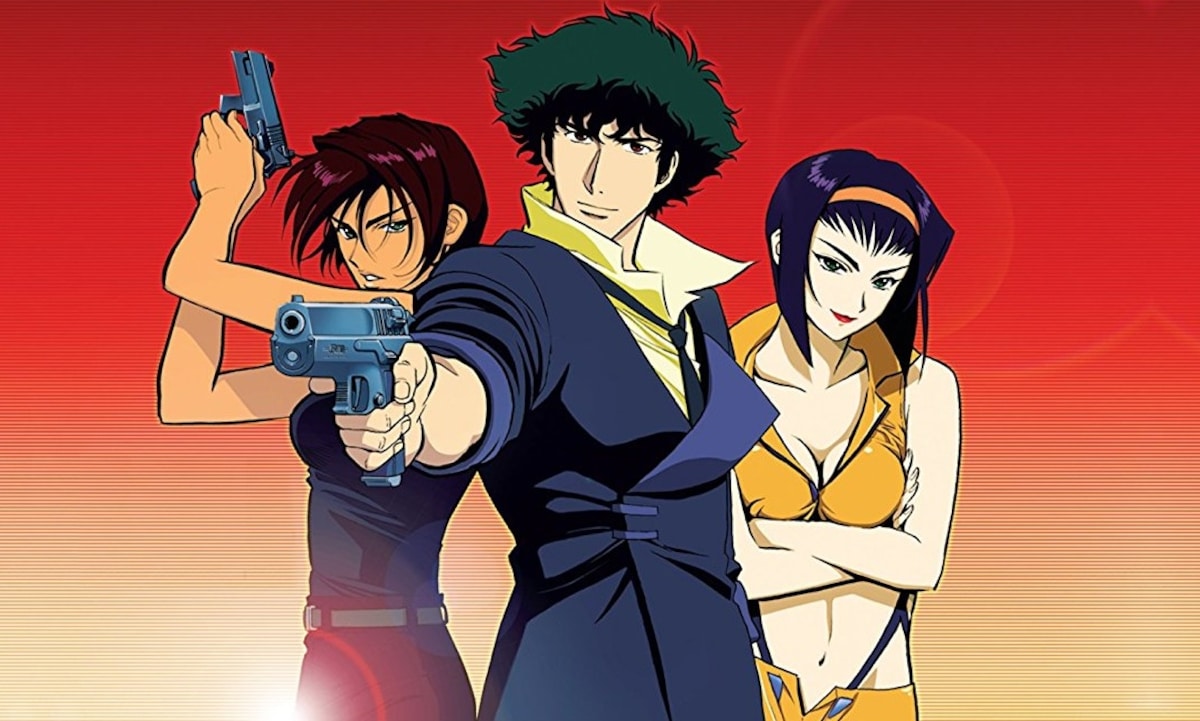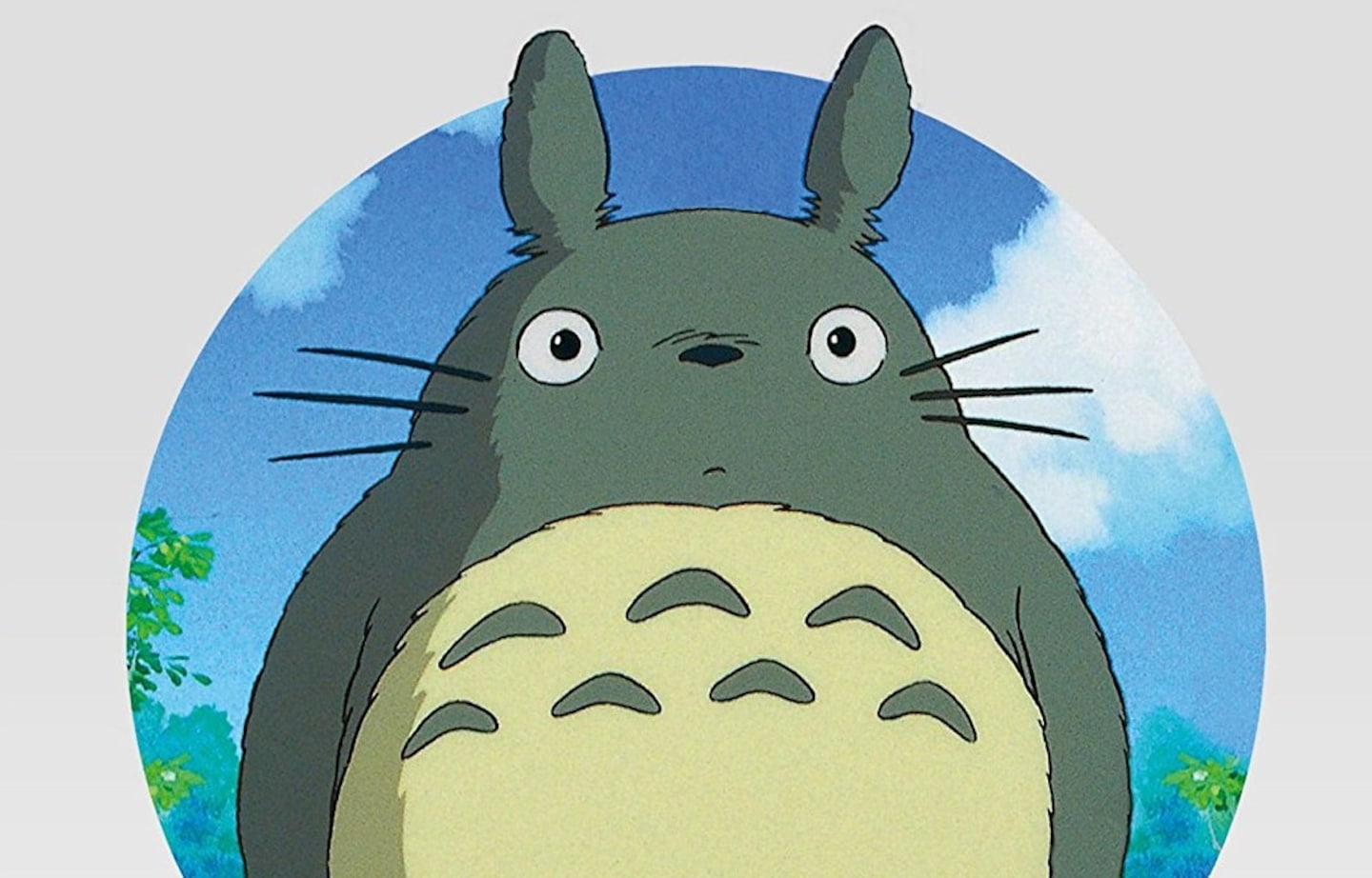11 Anime You Have to Watch Before You Die
Everyone has an opinion on the “best” anime. But let’s step back from quality per se and focus on impact. This is the list of anime you simply must watch before you die. Some can be done in less than two hours; others will take weeks or months of binge watching. All are worth the investment.
By Michael Kanert11. She, the Ultimate Weapon (2002)

https://www.amazon.com/She-Ultimate-Weapon-Fumiko-Orikasa/dp/B00R9O4XFS
This little-known series opens with a super-powered girl premise and immediately turns the convention on its ear. With tragically flawed characters placed in a wartime setting that’s gradually revealed to be more dire than anyone could have imagined, She, the Ultimate Weapon (最終兵器彼女・Saishu Heiki Kanojo) only becomes more heart-rending upon each subsequent viewing. 13 episodes with a lovely, aching soundtrack. Ignore the live-action movie.
10. Puella Magi Madoka Magica (2011)
https://www.youtube.com/watch?v=6CTHwEZK2JA
A series that intentionally abuses fan expectations, Puella Magi Madoka Magica (魔法少女まどか☆マギカ・Maho Shojo Madoka Magika) is designed to look like a lowbrow, lolita-fetish magical girl series, with an opening and character designs to match. But Madoka Magica's first episodes reveal an unexpectedly measured hand at the helm, and once it pulls the rug out from under you a few episodes in, the series only proceeds to gets darker on the way to an agonizing, mind-bending conclusion. The surreal witch labyrinth sequences alone will make your head spin. 12 episodes and three movies, though the movies are optional.
9. Attack on Titan (2013)
https://www.youtube.com/watch?v=KKzmOh4SuBc
Attack on Titan (進撃の巨人・Shingeki no Kyojin) is perhaps the most brutal mainstream anime series you can find: giant humanoids called Titans prey upon the last remnants of humanity, who have hidden behind medieval-style walls and use blades and steam-powered grappling hooks to fight off the giant invaders. The world-building keeps you on the edge of your seat with onion-like layers of mystery, while nearly any character could be dead in the next heartbeat. 37 episodes, plus optional OVAs and a spin-off junior high comedy series. The manga is years ahead of the anime, so if you find yourself hungry for more, go find a translation. Just avoid the live-action movies; within 30 minutes you’ll be begging for a Titan to tear off the roof and eat you.
8. One Punch Man (2015)
https://www.youtube.com/watch?v=2JAElThbKrI
Based on a badly drawn webcomic by an illustrator going by the moniker One, One Punch Man (ワンパンマン・Wan-pan-man) is a brilliant send-up of of the anime hero genre. The name is a play on the preschool superhero Anpanman, with hero Saitama’s costume even being a color-inverted version of Anpanman’s. Beneath the satire, One Punch Man sports a remarkably shining heart, exuding real empathy for everyman Saitama’s search for purpose even as it excoriates the superficiality of celebrity and self-promotion. The music is fun and the action animation superb; the more familiar you are with Saitama Prefecture the more you'll get a kick out of the setting. Just 12 episodes, with more to come. If you can’t wait, read the original comic, or check out the incredibly detailed reworking by Yusuke Murata (Note that some sequences are added to the Murata version that are not included in One’s original).
7. Voices of a Distant Star (2003)

https://www.amazon.co.jp/%E3%81%BB%E3%81%97%E3%81%AE%E3%81%93%E3%81%88-%E3%82%B5%E3%83%BC%E3%83%93%E3%82%B9%E3%83%97%E3%83%A9%E3%82%A4%E3%82%B9%E7%89%88-DVD-%E6%AD%A6%E8%97%A4%E5%AF%BF%E7%BE%8E/dp/B000I2JEA2/ref=pd_lpo_sbs_74_img_0?_encoding=UTF8&psc=1&re
Makoto Shinkai’s stunning Your Name (君の名は。・Kimi no Na Wa) is the more complete work, but it doesn’t resonate as strongly if you haven’t lived in countryside Japan. Shinkai animated Voices of a Distant Star (ほしのこえ・Hoshi no Koe) entirely on his own, instantly making a name for himself while introducing audiences to his recurring themes of distance and separation, in this case experienced by a couple whose phone messages take longer to deliver as the girl moves further out into space. Short film, 25 minutes.
If you like Voices, be sure to follow up with Your Name and 5 Centimeters Per Second (秒速5センチメートル・Byosoku Go-centimeter)—though the latter resonates best if you’re familiar with the changes to Japan’s rail infrastructure over the last two decades. The rest of Shinkai’s works are a little up and down, and enjoyment depends on the individual.
6. Naruto (2002)
https://www.youtube.com/watch?v=BjH1mDwMAWk
Naruto (ナルト) is ninja Harry Potter, with ninja villages instead of Hogwarts houses and swaths of time spent learning jutsu instead of spells. It's just as addictive, and just like Harry Potter, Naruto grows up with its audience, starting as a childish lark and gradually transforming into a very mature drama, really hitting the gas about halfway into Naruto Shippuden (ナルト疾風伝), which picks up two and a half years after the first series and shepherds the story to its epic conclusion.
The one problem is Naruto’s length. Unlike Dragon Ball Z (see below), there isn’t a single arc that can be picked out and enjoyed out of context—the series’ heart lies in the tension of its central character dynamic, a wire that’s drawn taut from beginning right to the very end, though the characters get bogged down in intermediate tasks on the way.
One saving grace here is Naruto’s notorious filler: you can skip swaths of side-stories by following a filler list, since nothing that affects the plot ever (really) happens in them. There are 220 episodes in the first series (94 fillers), then 500 episodes in Shippuden (218 fillers). That’s still 408 canon episodes, but they’re ultimately worth the ride—as long as you accept that female characters will only be allowed to do something useful once every 100 episodes (it’s pretty hard to ignore). If you’re still obsessed, you can go on to watch the various movies and the 2017 sequel series Boruto (ボルト).
5. Dragon Ball Z (1989)
https://www.youtube.com/watch?v=4HYgAydD6D0
With multiple transformations, endless power-ups, exploding yellow hair and literal hours of screaming while shooting energy blasts, Dragon Ball Z (ドラゴンボールZ) sets the unshakeable standard for fighting anime. The only problem is its length: there are 291 episodes in Dragon Ball Z alone, not counting 153 in the lighthearted Dragon Ball series that preceded it, 64 (non-canon) episodes of Dragon Ball GT, and more than 100 episodes in the ongoing Dragon Ball Super. Plus many movies.
Thankfully, there's no need to watch it all, and 2009’s Dragon Ball Kai re-release made even the essential bits more digestible by cutting out filler. Arguably the best sequence to watch is the Frieza Saga (Dragon Ball Z episodes 75-107, or Kai 36-54), though everything from DBZ episode 1 forms the lead-up to the intense finale with Frieza. The subsequent Trunks-Androids-Cell Saga (episodes 118-194/55-98 in Kai) also introduces a number of important characters you should probably get to know, though the payoff isn’t quite as strong. Thereafter, it’s just a matter of how much of a completist you are, as the series starts to run out of gas. If you want to skip ahead and still know enough to start following Super, the Battle of Gods (神と神・Kami to Kami) movie offers a nice, quick glimpse of where all the characters are at once the main series ends.
On the other hand, if you want to get the gist of things from episode 1 up to the end of the Cell Saga, try watching the parody series DragonBall Z Abridged. You need to be familiar with the standard character dynamics to understand how they’ve been altered for the sake of comedy, but the plot points are (almost) all the same, and Mr. Popo is reworked from an unfortunate stereotype into one of the best things in the series.
4. Neon Genesis Evangelion (1995)
https://www.youtube.com/watch?v=G7J3YthxMeQ
The epic mech series that gradually reveals that its mechs are an afterthought, Neon Genesis Evangelion (新世紀エヴァンゲリオン・Shin Seiki Evangelion) will blow your mind and possibly alter your worldview—and quite likely make you want to throttle the protagonist a dozen times on the way. Slathered in cryptic religious imagery, Eva is in turns astonishingly violent and intensely introspective, impossible to watch without a visceral reaction. It’s as popular today as it was upon release, when the shockingly abstract final two episodes led to a massive backlash from fans. Be sure to finish with the mind-bending The End of Evangelion (1997), which addressed the ending problem while simultaneously making it worse.
Presenting a somewhat impressionistic summary of the series, the Rebuild of Evangelion movies, starting in 2007, are also excellent, though the third instalment is too disconnected to recommend without seeing where the fourth and final film is headed. 26 episodes and two movies (one largely a recap) in the first series; four movies scheduled in Rebuild.
3. Ghost in the Shell (1995)
https://www.youtube.com/watch?v=cmXOr-QRq24
Back in 1995, Ghost in the Shell (攻殻機動隊・Kokaku Kidotai) was the second anime movie to make a splash in North America. Based on Masamune Shirow’s manga of the same name, director Mamoru Oshii tosses out the manga’s irreverent asides to ponder what it means to be human in a future where cyborgs are real and everyone has cybernetically enhanced brains—ultimately questioning whether your soul, or ghost, is something that could be externally hacked. Slow and introspective despite having a superhuman cyborg as the lead, action comes in intense bursts, with the music and style going on to influence The Matrix and more. Movie, 82 minutes. The 2004 sequel, Innocence (イノセンス), isn’t particularly compelling, but fans may want to check out the various Ghost in the Shell TV anime series, which bring back some of the more light-hearted manga elements amid the ontological brooding.
2. Akira (1988)
https://www.youtube.com/watch?v=-UhLderbuGI
There was a time in the early ‘90s when Akira (アキラ) was synonymous with anime. A condensed version of the first part of Katsuhiro Otomo’s sprawling manga of the same name, the visuals and ontology are mind-blowing, with brutal violence juxtaposed against theories about the final form of human evolution, all culminating in a hand-animated, stadium-sized ball of mutating flesh battling the most badass motorcycle ever committed to celluloid. The soundtrack alone is a masterpiece. Movie, 125 min.
1. All Miyazaki Movies (1979-?)
https://www.youtube.com/watch?v=92a7Hj0ijLs
Over 11 feature films, Hayao Miyazaki has not created a single throwaway. Each one is somebody’s favorite. By the time 1997’s Princess Mononoke (もののけ姫・Mononoke Hime) gave him a toehold among Western audiences, Miyazaki had already entranced Japan for nearly two decades with beloved classics such as My Neighbor Totoro (となりのトトロ・Tonari no Totoro), Laputa: Castle in the Sky (天空の城ラピュタ・Tenku Shiro Rapyuta) and Nausicaä of the Valley of the Wind (風の谷のナウシカ・Kaze no Tani no Naushika), and even inspired Steven Spielberg with Lupin III: The Castle of Cagliostro (ルパン三世 カリオストロの城・Rupan Sansei: Kariosutoro no Shiro).
In 2002, Spirited Away (千と千尋の神隠し・Sen to Chihiro no Kamikakushi) became the first anime film to win an Oscar, and even 2013’s meditative The Wind Rises (風立ちぬ・Kaze Tachinu) touchingly explores the conflicted reflections of an older man. Meanwhile, longtime collaborator Joe Hisaishi has given Miyazaki’s films a cavalcade of unforgettable scores, with his songs sung by children all over Japan.
Miyazaki has directed 11 feature films in total, and his announced 12th, How Will You Live? (君たちはどう生きるか・Kimitachi wa Do Ikiru ka), is expected to take several years to complete. If you’ve already gone through them all, you can go back and check out the 1970s Lupin III (ルパン三世・Rupan Sansei) TV series Miyazaki directed, as well as the pessimistic yet uplifting Future Boy Conan (未来少年コナン・Mirai Shonen Konan), an oft-overlooked gem.
Many of the other films produced by Miyazaki’s Studio Ghibli are also excellent, but not as universally so, so you have to pick and choose. Whisper of the Heart (耳をすませば・Mimi wo Sumaseba) is a nice one to start with; people often recommend Grave of the Fireflies (火垂るの墓・Hotaru no Haka), but since it gives away the conclusion in its opening scene, it’s mostly a great film designed to make you feel awful. You may also want to check out Nadia: The Secret of Blue Water (ふしぎの海のナディア・Fushigi no Umi no Nadia), which was conceptualized by Miyazaki and ultimately helmed by Hideaki Anno, who went on to make Neon Genesis Evangelion.
Honorable Mentions

https://www.amazon.com/Cowboy-Bebop-Blu-ray-Steve-Blum/dp/B004R0MF0M/ref=pd_sim_74_1?_encoding=UTF8&psc=1&refRID=F2GQ8FGZX2GABAF5F3J6&dpID=51uO8LZlF%252BL&preST=_SY300_QL70_&dpSrc=detail
Upset that we missed your favorite? Or perhaps just looking for more suggestions? On the next page we take a swing at justifying why certain anime weren't included on our list. This isn’t to say any of them are necessarily inferior to those listed, or that you shouldn’t watch them—in fact, many are excellent. But as good as they may be, missing them just isn’t as guaranteed to leave a hole in your life. Take a look!





